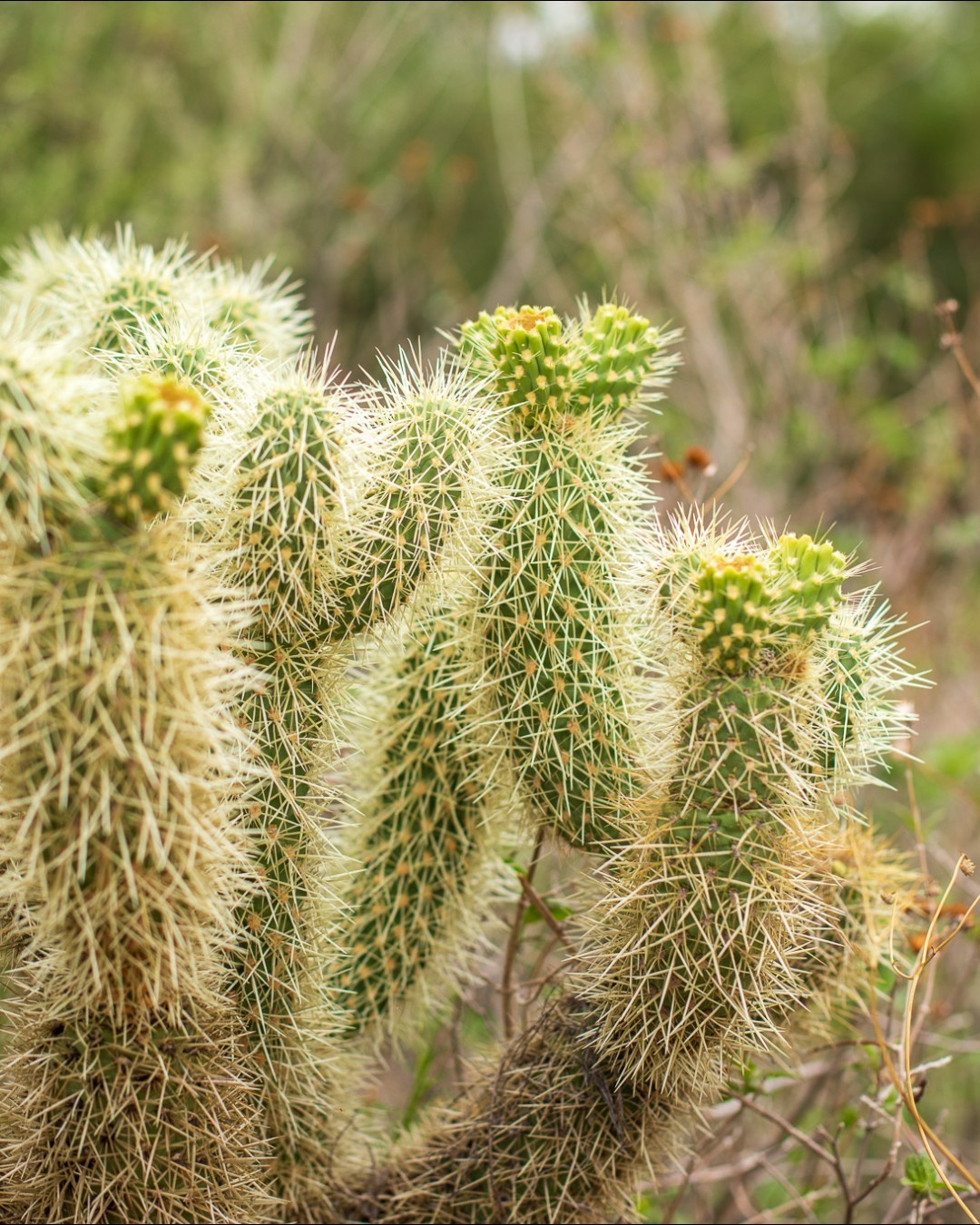Summary:
– The teddy bear cholla cactus (Cylindropuntia bigelovii) is a formidable plant in the desert, offering protection for wildlife such as the desert packrat and cactus wren.
– Packrats use the easily detached cholla stems to build a defense system around their burrows, deterring predators.
– Cactus wrens take advantage of the dense mass of spines to construct their nests within the cholla cactus, providing a safe habitat for their young.
The teddy bear cholla cactus (Cylindropuntia bigelovii) is a fascinating and unique plant in the desert that serves as a formidable fortress for desert wildlife. Its prickly armor adds to the charm of the desert landscape and provides essential protection for creatures like the desert packrat and the cactus wren.
One of the peculiar aspects of the teddy bear cholla cactus is its easily detached stems. Often called “jumping cholla,” these stems have evolved as a clever defense mechanism. When touched or brushed against, these stems detach from the plant and adhere to the fur or clothing of unsuspecting beings, including humans. The stems are covered with tiny, barbed spines that can cause pain and irritation, leading to their nickname of “teddy bear” as they appear to hug their victims like a cuddly bear.
While encountering a jumping cholla is not the most pleasant experience, it serves as a vital form of protection for desert wildlife. The desert packrat, a woodrat, utilizes easily detachable cholla stems for its defense system. These resourceful creatures gather the discarded stems and strategically place them around the entrance of their burrow. Doing so creates a formidable barrier that deters potential predators, such as snakes and coyotes, from attempting to enter their homes.
The packrats’ clever use of the cholla stems as protection is a testament to their adaptability and ingenuity in an environment that poses numerous challenges. This symbiotic relationship between the teddy bear cholla and the desert packrat showcases the incredible interconnectedness of nature and the way different species rely on each other for survival.
The teddy bear cholla cactus also offers a haven and nesting opportunities for the cactus wren, a small bird that specifically seeks out the prickly embrace of these cacti. Despite the seemingly inhospitable nature of the cholla cactus, the dense mass of spines provides an ideal location for the cactus wren to build its nests. The spines protect the nest from potential predators, creating a secure environment for the wrens to raise their young.
The nests of cactus wrens within the cholla cactus are a marvel of architecture. The wrens meticulously weave twigs and grasses in and around the spines, creating a tightly woven structure that provides safety and shelter. The design of these nests is not only functional but also blends seamlessly with the surrounding cactus, making it difficult for predators to spot them.
Furthermore, the cactus wren’s choice of nesting in the cholla cactus is strategic. The intricate maze of spines protects from elements such as wind and sun, helping to regulate temperature and provide shade for both the adult birds and their offspring.
Witnessing the unique relationship between these desert-dwelling creatures and the teddy bear cholla cactus is awe-inspiring. With its defensive arsenal of easily detachable stems and barbed spines, the cholla cactus enables the desert packrat and cactus wren to thrive in a harsh environment. These creatures have discovered the perfect balance between protection and survival through their ingenious adaptations and close association with the cholla.
In conclusion, the teddy bear cholla cactus is more than just a prickly plant in the desert; it is a vital protector and provider for desert wildlife, including the desert packrat and the cactus wren. Its easily detachable stems and dense mass of spines offer valuable defense mechanisms that allow these creatures to flourish in their arid surroundings. The intricate relationships between the cholla cactus and these species highlight the intricacies and beauty of the natural world, reminding us of the extraordinary adaptations that occur within even the harshest of environments.
*****
Source Description
🐻 A formidable plant, the teddy bear cholla cactus (Cylindropuntia bigelovii) offers valuable protection for desert wildlife such as the desert packrat and cactus wren. Packrats gather the easily detached cholla stems around their burrows to protect against predators, while cactus wrens build nests within the dense mass of spines!

